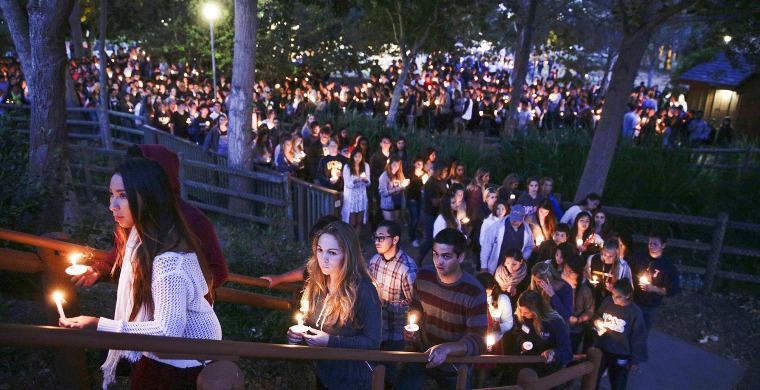Divorce – The Overlooked Cause of Mass Murderers
By Mike McManus
June 5, 2014
Why did Elliot Rodger, 22, stab three men including two roommates, murder two girls in a sorority, and kill a man while driving his BMW, before killing himself?
He posted a YouTube video in which he said, “You are animals and I will slaughter you like animals…Just for the crime of living a better life than me. All you popular kids, you’ve never accepted me, and now you will pay for it.”
The video so alarmed his mother, that she called the police who visited Elliott, who was so polite they dropped the matter. (Why didn’t they ask to see the video, and search his apartment for guns?) His parents were so frightened, they drove (separately) from Los Angeles to the Santa Barbara area, but got there belatedly.
Their parental concern was commendable – but 15 years too late. The couple divorced when Elliott was 7, and he never recovered.
His father, who worked in Hollywood films – quickly found another girlfriend. Elliot wrote, “How ironic that it is my father, one of those men who could easily have found a girlfriend, has a son who would struggle all his life to find a girlfriend.”
Michael Cook, writing for Mercatornet, reports that “Most of the men on the never-ending list of rampage killers in the United States came from homes where the parents were divorced or separated.” Examples:
John Zawahiri, 23, killed five people in Santa Monica in 2013. His parents have been separated for years.
Adam Lanza, 20, killed his divorced mother, before slaughtering 6 teachers and 20 children in Connecticut, and killed himself.
Wade Page, whose parents were divorced, became a white supremacist who killed 6 Sikhs before being killed by a police officer.
Half of American children experience a parental divorce and only a tiny minority become killers. However, Pat Fagan and Robert Rector of the Heritage Foundation report that in Wisconsin, children of divorced parents are 12 times more likely to serve time in jail than children from intact, two-parent homes.
What can be done to reverse these trends? I have two suggestions.
Greg Griffin (770 310-7190), a pastor who got a divorce he didn’t want, has championed a “Children’s Hope for Family Life Act” in Georgia that would require couples with children to take a course on the impact of divorce on kids – BEFORE divorce papers can be filed. Hopefully, that would persuade many to save their marriages. Second, his bill would extend the time before the divorce takes effect from a paltry 30 days to one year. And during the year, they’d be required to take classes to improve their skills of resolving conflict. Those are all marriage savers.
Edwin Feulner, former President of Heritage Foundation, writes, “You can actually use the divorce rate in a given area to predict its level of crime, according to a University of Chicago sociology professor Robert Sampson, who studied 171 U.S. cities and found that the lower a city’s divorce rate, the lower its crime rate.”
My wife and I have helped the clergy of 230 cities to adopt a Community Marriage Policy that cuts city-wide divorce rates. An independent study by the Institute for Research and Evaluation of our first 114 cities found that the divorce rate fell an average of 17.5% in seven years. In nearly a tenth of cities divorce rates were cut in half or better, such as Austin, Kansas City, KS, Modesto, CA, and El Paso, where the divorce rate actually plunged 79.5%!
Result: El Paso has had THE LOWEST CRIME RATE of any major city for the last four years! This city of 665,000 had only 5 murders in 2010 when Washington DC, with 617,000 had 132 murders. Austin, where divorces plunged 50%, was America’s 4th safest city.
What is a Community Marriage Policy? It is a pledge by clergy of all denominations to take proven steps to save marriages at five stages:
Preparation that includes requiring all couples to take a premarital inventory with 150 items and discuss the results with trained Mentor Couples.
Enrichment to give a booster shot to all married couples on an annual basis.
Restoration troubled marriage by training couples whose own marriages had once nearly failed, to mentor those in current crisis.
Reconcile separated couples with a course, Marriage 911 taken by the committed spouse to spark such growth the errant partner is won back.
Stepfamilies normally divorce at a 70% rate, but if they join a Stepfamily Support Group, 80% of marriages are saved.
To learn more, go to www.MarriageSavers.org or call 301 469-5873.
Michael J. McManus, President of Marriage Savers and a syndicated columnist.














